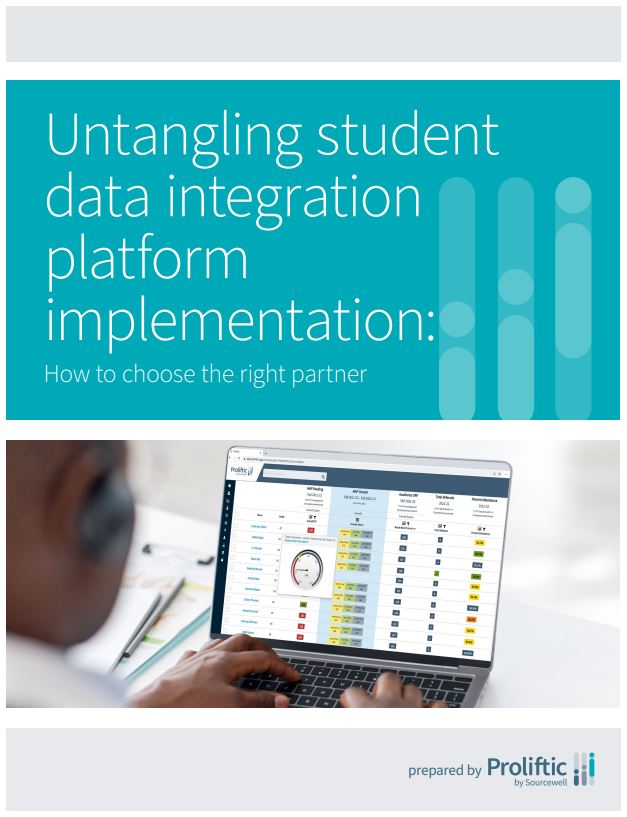You work in a world that runs short on a lot of things – time, money, staff, resources.
One thing you’re never in short supply of? Data. From student enrollment, attendance, grades, test scores, discipline referrals, and so much more, it can become overwhelming to keep it all straight.
Districts often find themselves data rich but information poor, meaning they have access to more student data than ever before, but often aren’t well-positioned to take advantage of this wealth of knowledge.
Choosing the Right Student Data Integration Platform
Data are important and allow districts to make well-informed strategic decisions to benefit students. Administrators often use data for an overall picture of how their students are progressing and as a snapshot of the district’s health.
The COVID-19 pandemic made whole-child data even more important, and it’s well documented that many students are behind in reading and math. It’s crucial that districts make the most of their data, from comparing past benchmarks to measuring each student’s monthly progress.
When student data are hard to access within the district and don’t work well with the programs that educators use, the data are almost useless. School leaders and teachers are burdened with moving data back and forth between different programs, such as Google Sheets, or manually pushing Excel files since programs don’t always understand each other’s data formats and can’t share data easily.
Bringing disparate sources of data into an easy-to-access platform makes it more efficient for educators to tackle challenges. A data integration platform helps translate and share data between a student information system — also known as an SIS — and a multitude of programs. A strong data integration platform saves school leaders and teachers time while also providing the information needed to set students up for success.
Implementing a Student Data Integration Platform
Like many large-scale technology adoptions, data integration platforms are difficult to implement well.
Successful student data solution implementation vendors share two key attributes:
- Data and change management expertise
- A focus on partnership and stewardship
Not all data integration platforms are created equal, but a good one gives administrators and teachers the power to lead with data and see how their students are performing and why. A complete, detailed picture of performance across the district, down to individual students, ensures the alignment necessary for everyone to work toward a common goal: student success.
The team at Sourcewell has honed the implementation and support process for Proliftic, its student data integration platform — ensuring there aren’t surprises for end users. The team tailors training and implementation to the unique needs of the district, including how it plans to use the system and data. This includes identifying district roles and defining a mutually agreed upon definition of success. Additionally, the team provides access to support resources including user groups and experts, such as former educators and administrators, and data and Multi-Tiered System of Support (MTSS)/Response to Intervention (RTI) thought leaders.
What are your next steps?
Read the white paper on choosing the right platform and get the full story on centralizing your data and propelling student success!
Sponsored Content Disclaimer:
Sponsored Content in Partnership With NASSP
NASSP allows select groups to share information and thought leadership with our program audiences.


